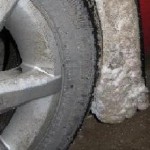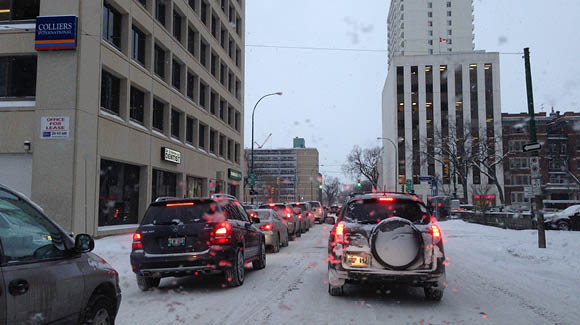Winter presents driving challenges. When it’s cold outside it’s tempting to idle your car to warm it up. What you need to know is that idling your car will only warm the engine, the rest of the moving parts of your drive train are still cold. Until all those moving parts have warmed up your car will not be running efficiently. The best way to warm up your vehicle is to drive it. Idling in general wastes fuel and gets you nowhere. Check out our “Idling Wastes Fuel” myth busting blog.
To help speed up the warming up process, use your block heater (the most you need is 2 hours, not all night) and consider installing a winter front cover on your car to reduce the amount of cold air reaching the radiator. Using a piece of cardboard in front of the radiator is not recommended as it stops all air from reaching the radiator and in warmer conditions can cause your vehicle to overheat.
One of the most common concerns about driving a car before it warms up is the potential for the windows to fog up and make it difficult to see. There are several things that you can do to avoid this problem. First, when you leave your car parked, leave a window open just a few millimeters. This will allow hot air and moisture inside your car to escape before it forms frost on your window. Make sure that you clear away the snow from the air intake (in front of the windshield area). When you do get in your car, open your windows a little bit. It may seem counter intuitive, but opening the window allows some of the moisture from your breath to escape and not condense on the windows.
Driving on snow and ice also increases fuel consumption because your tires slip and spin. Snow can also add to the drag placed against the vehicle’s motion. Remember to just take it easy, spinning and sliding will not only increase your fuel use, but the wear and tear on your vehicle as well. Even spinning your tires on ice will increase the wear on your tires.

Make sure to clear the snow off your car and clean out any snow and ice that builds up in your wheel wells. This extra weight will reduce your fuel economy. It’s also much safer when you can see clearly in all directions.
Don’t forget to check your tire pressure as well. In winter and especially during significant temperature swings, tire pressure can decrease significantly. Make sure that your valve stems have caps on them so that moisture does not freeze in the valve and allow the air to escape.
Specifically designed winter tires provide better traction and therefore can improve fuel economy under the right conditions. Want to know more about winter tires?




Opening your windows a little bit does sound pretty counterproductive since my purpose is going from a warm house to a warm car but I do feel guilty running the car for 15-20 mins wasting gas.
From personal experience I find that for the most part i don’t have to open the window a little bit unless I am only going a short distance before having to stop or unless there are more people in the car with me which tends to fog up the windows more quickly.
It may be nice to step into a nice warm car but the costs, both financially and to the environment keep mounting.